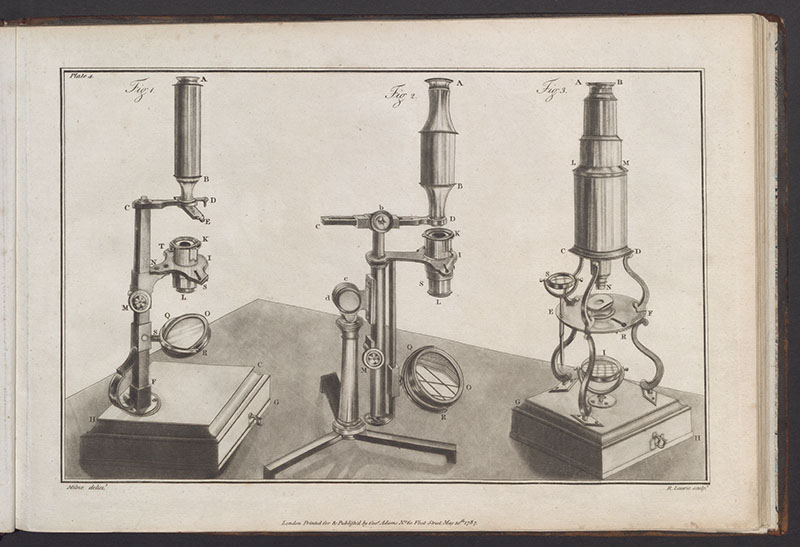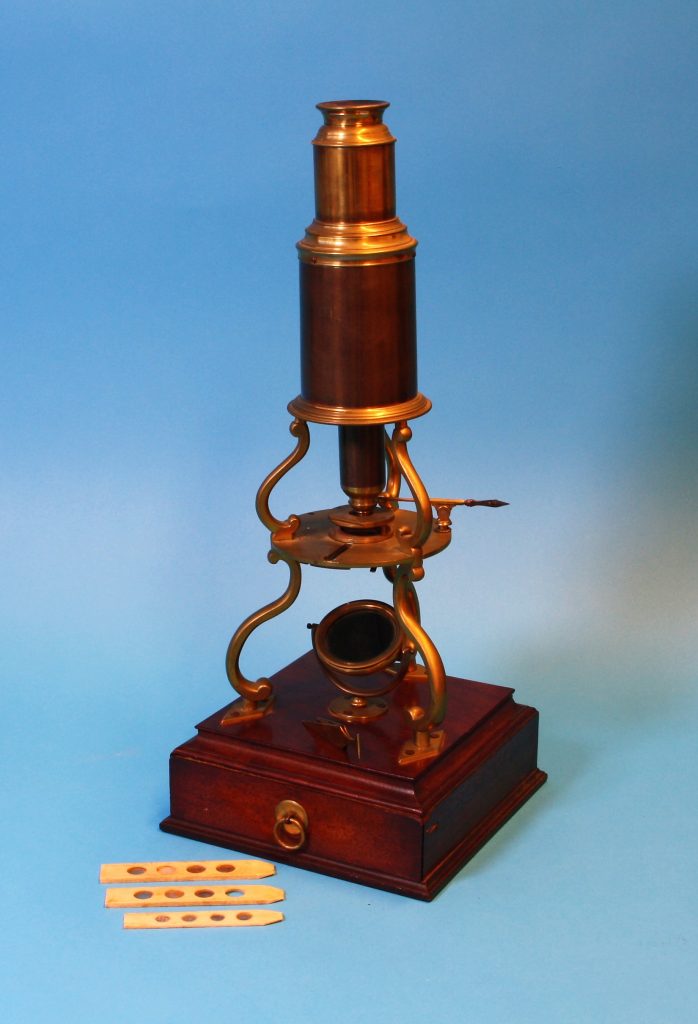
George Adams (1708-1772), George Adams jr (1750-1795) and Dudley Adams (1762-1826)
George Adams was the son of Moricce Adams, a lorimer (someone who made small metal parts for horse and riding gear), and was apprenticed to James Parker (and subsequently Thomas Heath) of the Grocers’ Company in 1724. At the end of his apprenticeship, he set up an instrument-making business and became internationally famous for his terrestrial and celestial globes. His book on how to make and use them passed through 30 editions, and he wrote many others on different aspects of his business. “Microscopia Illustrata” included a description of the structure and use of a microscope as well as a translation of Joblot’s book on animalcules. He included the current catalogue (up to 24 pages) for his shop at the end of each of the 4 editions. In 1757, he became instrument maker to the Prince of Wales and retained the position when the Prince became King George III. He was also instrument supplier to the East India Company and the Ordnance Department of the Government. George Adams is credited with a number of microscope improvements, but one or two of his designs were not exactly practical. Among the microscopes he produced was one for the King which is so ornate as to be difficult to use, and his “New Universal Double microscope” was described by a Royal Society author as impractical since it required one hand to hold it upright!
Adams jr’s apprenticeship to his father began in 1765 and lasted until his father’s death when Adams jr took over (in partnership with his mother, Ann, for the first few years). He followed his father in his official appointments to the Crown and Government and also wrote a number of books on microscopy, astronomy and other subjects. The copyright for the books was sold to William and Samuel Jones by George jr’s wife, Hannah, after his death.
Dudley Adams served his apprenticeship with his brother George, and then opened his own shop. His main interest seems to have been telescopes. Among his patents was one covering a way of making the draw tubes of telescope rigid. After legal disputes, he took over the main family business in 1796 and became globe and mathematical instrument-maker to the King until 1817, when he went bankrupt and everything was sold. He then opened a business, describing himself as a “Professional Medico-Electrician” in his 1820 book “Electricity is the fountain, the great vivifying principle of nature”.

Compound tripod microscope, Culpeper type
ADAMS
ca. 1750